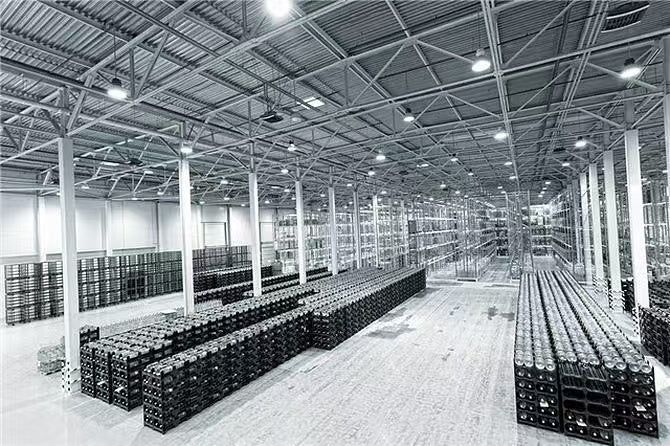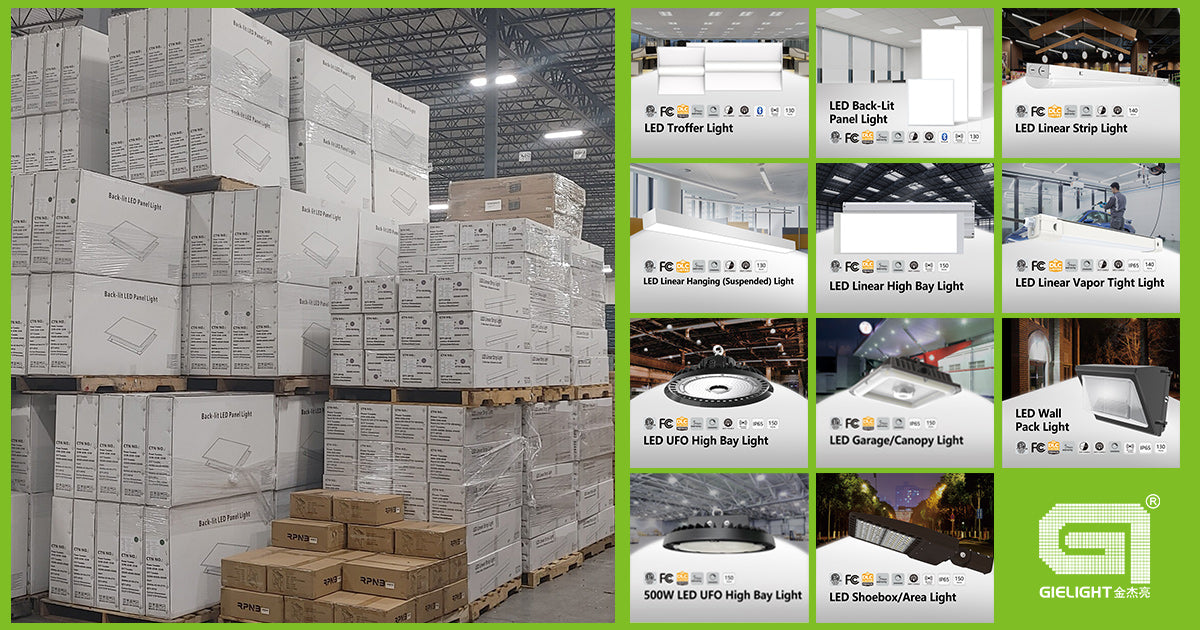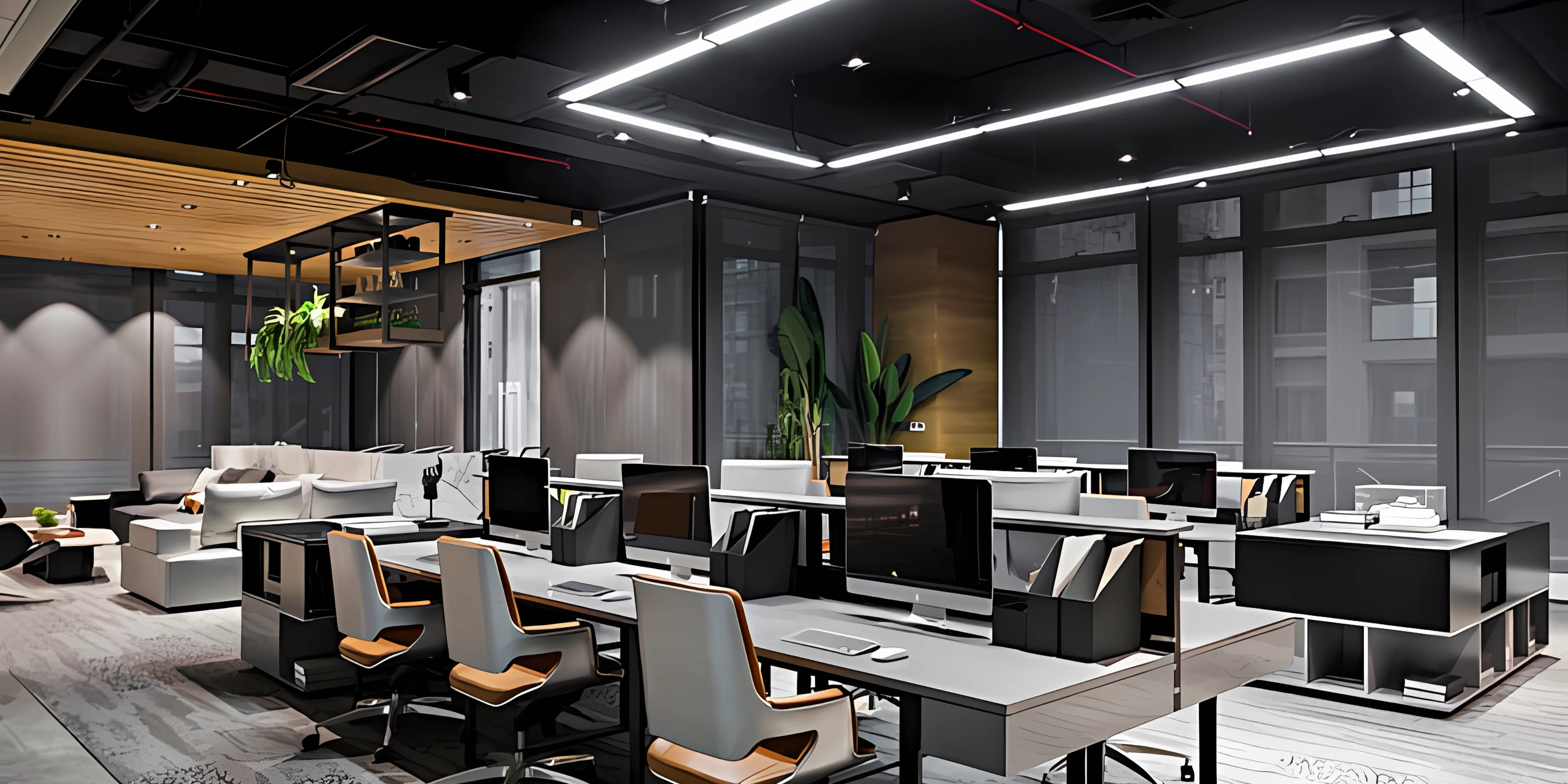Selecting the right high bay lighting involves understanding your space's specific requirements and how different lighting types and configurations can meet those needs. Here’s a guide to help you make an informed decision for optimal illumination of high-ceiling applications.
Understanding High Bay vs. Low Bay Lighting
High Bay Lighting:
- Usage: Ideal for spaces with ceilings 15 feet (4.5 meters) or higher, such as warehouses, factories, gyms, and large retail areas.
- Power: Typically over 100 watts, designed to illuminate large areas and provide intense, uniform light.
- Features: More robust and adaptable to harsh environments; often used in settings with high airborne particle concentrations.
Low Bay Lighting:
- Usage: Suitable for ceilings below 15 feet (4.5 meters), such as retail stores, offices, and small warehouses.
- Power: Usually under 100 watts, providing sufficient light for smaller spaces.
- Features: Less intense than high bay lighting, and generally used for less demanding environments.
Why Choose High Bay Lighting?
-
Durability and Longevity:
- Initial Investment vs. Long-Term Savings: While the initial cost is higher, LED high bay lights are more durable, energy-efficient, and require less frequent replacement than traditional lighting.
- Efficiency: LEDs provide high-quality, daylight-mimicking light that improves visibility and reduces the risk of accidents.
- Heat Reduction: LEDs generate less heat compared to traditional lighting, enhancing safety and reducing fire risks.
-
Adaptability:
- Sensors: Can be used with microwave or infrared sensors without impacting their lifespan.
- High CRI: Many high bay LEDs offer a high Color Rendering Index (CRI), making it easier to see details and reduce dark spots in warehouses and similar environments.
Types of High Bay Lighting
-
Round (UFO) High Bays:
- Design: Circular beam with typically a 110-degree spread.
- Applications: Factories, warehouses, grocery stores, and airport hangars.
- Lifespan: Over 50,000 hours of maintenance-free operation.
-
Linear High Bays:
- Design: Rectangular shape, available in various widths and lengths.
- Applications: Grocery stores, warehouses, environments with shelving.
- Features: Can be mounted directly or suspended; often have a high CRI for improved visibility.
Recommended Heights for High Bay Lights
- Ceilings 15-20 Feet (4.5-6 meters): Install high-bay lights at 15-20 feet.
- Ceilings 20-25 Feet (6-7.6 meters): Install high-bay lights at 20-25 feet.
- Ceilings Above 25 Feet (7.6 meters): Position lights at the same height or slightly lower than the ceiling height.
Applications and Configurations
-
Manufacturing Facilities:
- Height Range: 18-30 feet (5.5-9 meters).
- Focus: Adequate illumination for machines, workstations, and assembly lines.
-
Warehouses:
- Height Range: 20-35 feet (6-10.7 meters).
- Focus: Overcoming shadowed areas created by stacked goods and tall racks.
-
Sports Facilities:
- Height Range: 30-150 feet (9-46 meters).
- Focus: Consistent, high-level lighting throughout the playing field.
-
Shop Lighting:
- Typical Setup: T5 or T8 fluorescent tube lamps, mounted high with concave reflectors for even illumination.
-
Industrial High Bay Lighting:
- Advantages: Instant-on capability, suitability for microwave sensors, and adaptability for different lighting qualities.
-
Loading Areas:
- Focus: Powerful lighting for safety and efficiency in cargo handling areas. Consider additional features like adjustable dock guide lights for enhanced visibility.
Final Tips for Choosing High Bay Lighting
- Evaluate Lighting Needs: Assess the specific requirements of your space, including ceiling height, space size, and the nature of activities performed.
- Consider Energy Efficiency: Opt for LED high bay lights to reduce energy consumption and maintenance costs.
- Factor in Environmental Conditions: Choose fixtures that can withstand harsh conditions if needed.
- Plan for Installation and Maintenance: Ensure the selected lighting system is compatible with your installation setup and maintenance capabilities.
By understanding these factors, you can choose high bay lighting that not only enhances visibility and safety but also provides long-term value and efficiency for your space.



Leave a comment
This site is protected by hCaptcha and the hCaptcha Privacy Policy and Terms of Service apply.